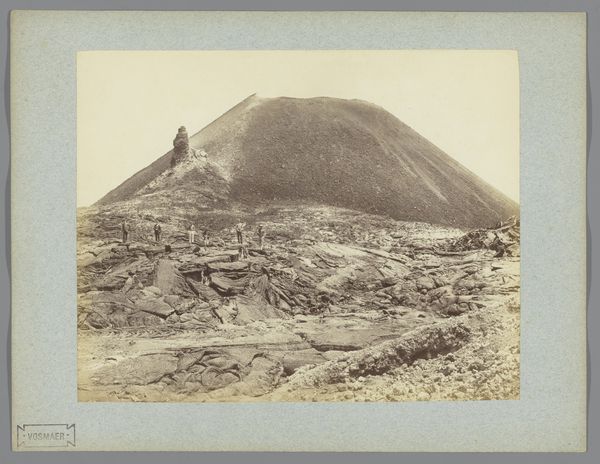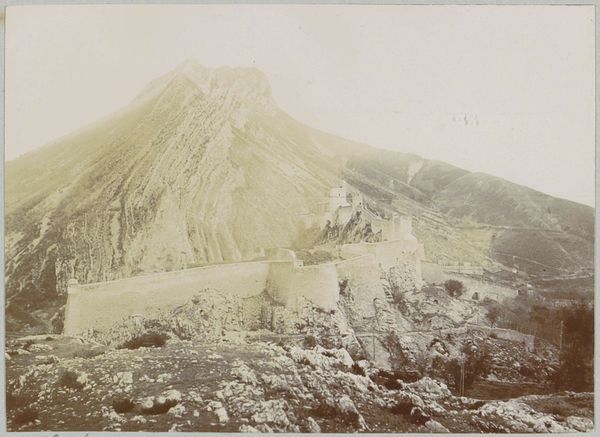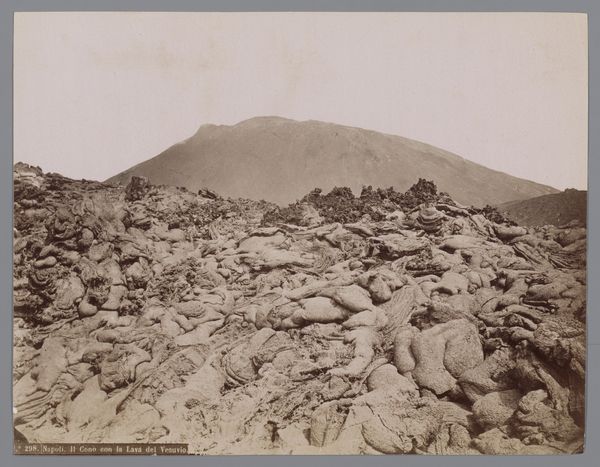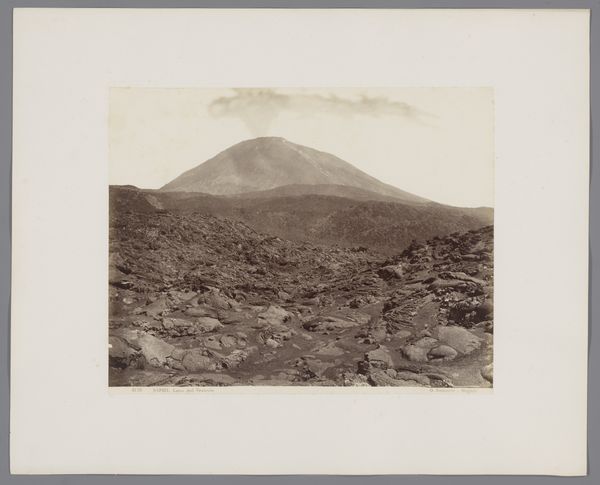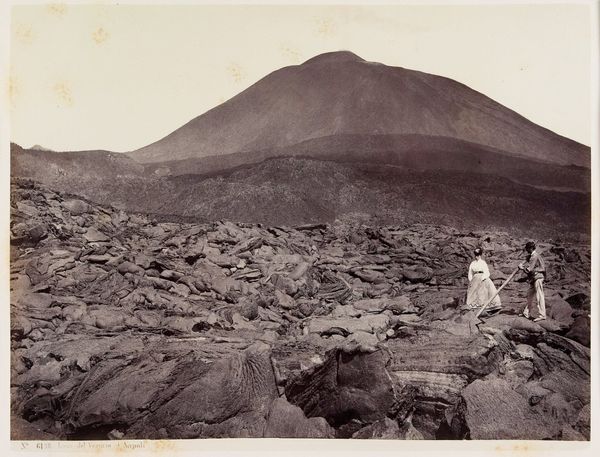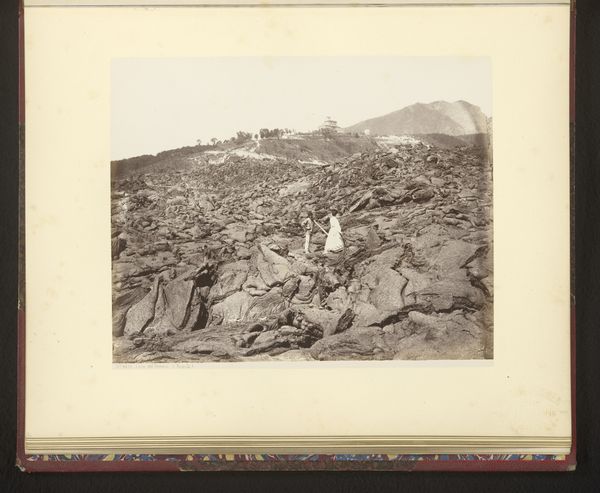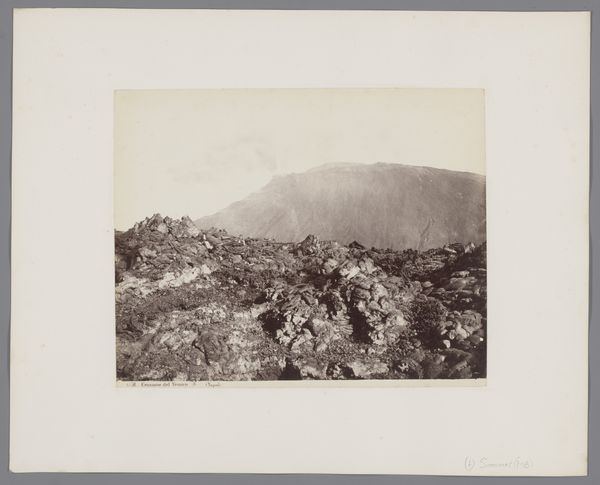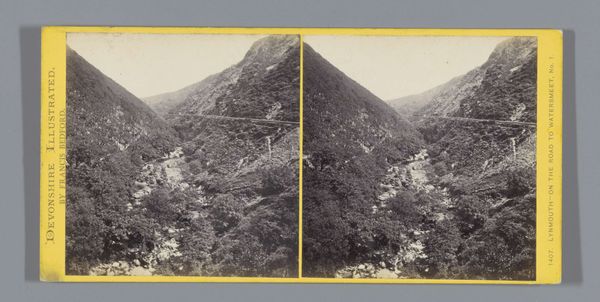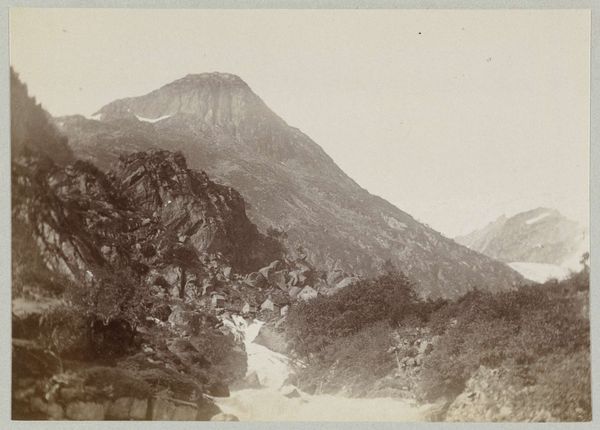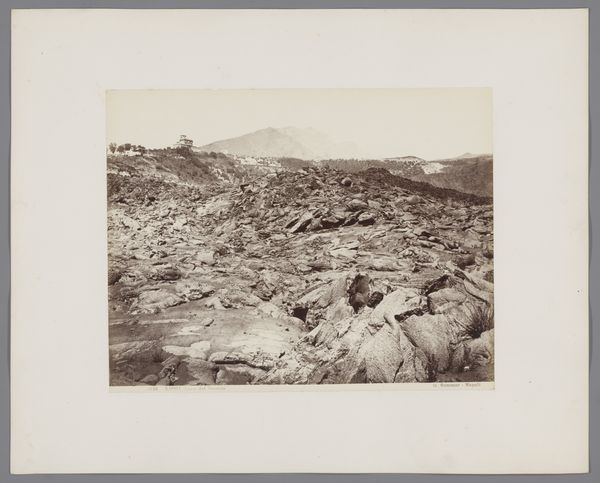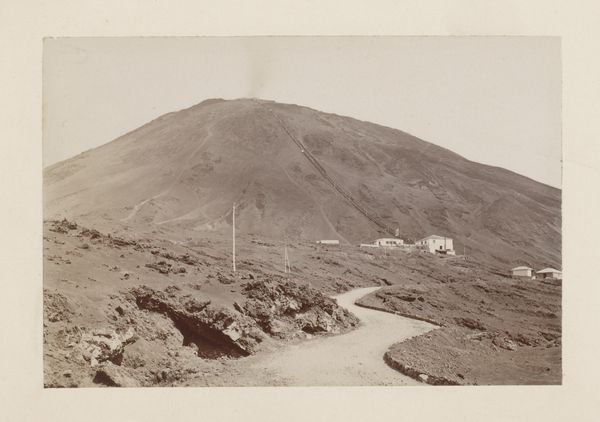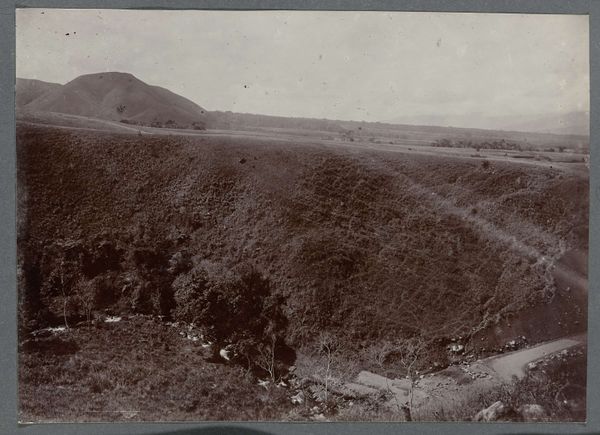
photography
#
16_19th-century
#
landscape
#
photography
#
realism
Dimensions: height 156 mm, width 445 mm
Copyright: Rijks Museum: Open Domain
Editor: This is "Gezicht op de krater van de Vesuvius, Italië," taken between 1880 and 1881 by Giacomo Brogi. It’s a photograph of the Vesuvius crater, and the overwhelming sense I get is one of desolate, raw power. How would you interpret this work? Curator: Looking at this image, I'm struck by how it encapsulates the intertwined narratives of human history and the environment. Consider the social context of 19th-century Italy, still grappling with unification and deeply affected by seismic activity. How do you think the photograph engages with this complex relationship? Editor: I guess it's easy to see Vesuvius as just a destructive force, but framing it this way seems too simple, doesn't it? Curator: Precisely. The romanticization of landscapes, especially powerful ones like Vesuvius, often ignored the socio-economic realities for the communities living in its shadow. The seemingly detached landscape hides untold stories. Where does the focus on aesthetic experience potentially erase these human elements? Editor: So, in celebrating its beauty or its sublime terror, we're overlooking the stories of the people affected? It's a haunting perspective shift. Curator: Exactly. Think about the communities who have lived through eruptions, rebuilding their lives time and again. This image offers an opportunity to reflect on our role in perpetuating or challenging the unequal distributions of power and the lived consequences of disaster. It brings an important sense of accountability. Editor: That gives me a lot to consider; I didn't initially think of this image in terms of environmental and social justice. Thanks! Curator: It's crucial to remember that images, especially landscapes, are never neutral. Examining them critically helps us uncover and understand the complex intersections of history, identity, and place.
Comments
No comments
Be the first to comment and join the conversation on the ultimate creative platform.
